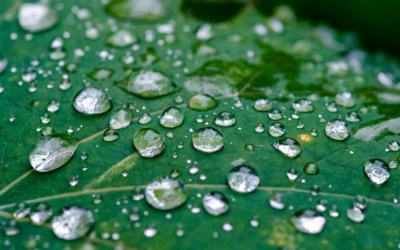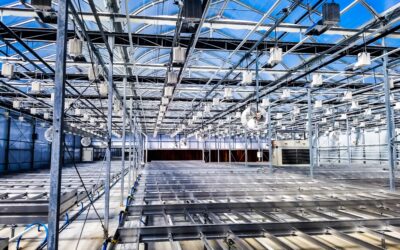Top 8 Greenhouse Maintenance Tasks for Spring
Spring greenhouse maintenance is an important phase of the calendar for greenhouse operators. As temperatures steadily shift upward, late winter is the perfect moment to prepare the greenhouse for the upcoming growing season.
This involves a range of activities, from cleaning and repairing the structure to calibrating environmental control systems. These tasks might seem straightforward, but they require a good deal of knowledge and attention to detail. Proper maintenance ensures that plants have the best conditions to thrive, directly impacting yield, quality, and profitability.
This article aims to provide greenhouse operators with a comprehensive guide to spring maintenance, offering detailed insights and actionable advice on how to care for their greenhouses.
With the right practices, operators can not only extend the lifespan of their greenhouse but also enhance the efficiency and sustainability of their operations, leading to better outcomes and higher profits.
READ MORE: LLK Preventative Greenhouse Maintenance Checklist
Incorporating these maintenance tips into a regular care schedule will help to prevent small issues from becoming major problems, ensuring that the greenhouse remains a productive and efficient space for crop cultivation.
Inspect and Repair Glazing Material
Best Practices: Inspect all glazing materials for cracks, discoloration, or gaps that can affect light transmission and energy efficiency.
For glass greenhouses, replace broken or cracked panes immediately to maintain structural integrity and prevent heat loss. In plastic or polycarbonate structures, look for signs of UV degradation, such as brittleness or yellowing, and replace panels as needed to ensure maximum light penetration.
Use appropriate sealants to fill any gaps, preventing air leaks and potential pest entry points.
If you and your team are doing this work in late winter, but take the time to schedule these inspections proactively at least twice a year, before the onset of extreme weather conditions like summer heat or winter cold, to preemptively address any vulnerabilities. When your calendar reminds you in late fall to inspect your glazing material once again, you will be grateful to your past self.
Gutter and Drainage System Maintenance
Best Practice: Clean and inspect gutters and drainage systems to prevent water accumulation and potential damage to the greenhouse structure.
Ensure that gutters are free of debris, such as leaves and dirt, which can cause blockages and lead to water overflow, potentially damaging plants and the greenhouse foundation. Check downspouts for clogs and ensure that drainage lines are clear and effectively directing water away from the greenhouse
Consider installing gutter guards to minimize maintenance and improve water flow. Proper drainage is critical to prevent waterlogging of the soil around the greenhouse, which can lead to foundation issues and affect the overall stability of the structure.
Shade and Energy Curtain Management
Best Practice: Installation of automated shade systems that adjust based on solar radiation levels, reduce stress on plants during peak sunlight hours. If you’ve already installed those shade systems, take time to run them and inspect the equipment for mechanical efficiency. If not, consider installing a shade system for energy savings and productivity.
Use energy curtains to conserve heat during the night, opening them during the day to prevent overheating and to allow for ventilation; they get a lot of use throughout the year. Regularly inspect and maintain curtain mechanisms to ensure smooth operation and responsiveness to environmental controls.
Structural Integrity Checks
Best Practice: Conduct a thorough inspection of the greenhouse’s structural components, including frames, trusses, screens, and supports, for signs of wear, corrosion, or damage.
Pay special attention to joints and connections, as these are common points of failure. Use a greenhouse maintenance checklist to assess each component’s condition, looking for rust in metal structures or rot in wooden frames.
Apply protective coatings or paint to metal parts to prevent rust, and treat wooden components with appropriate sealants to guard against moisture and pests. Replace or repair any damaged structural elements promptly to maintain the greenhouse’s integrity or contact an experienced
Lubricate moving parts, replace worn seals and filters, and test backup systems (generators, water pumps) to ensure readiness. Keep a log of all maintenance activities and schedule reminders for periodic checks and preventive maintenance.
Additionally, after extreme weather events such as heavy snow, strong winds, or hail, perform additional inspections to address any immediate damages, ensuring the safety and functionality of the greenhouse.
Calibration of Environmental Control Systems
Best Practice: Take the time to run a full calibration check on all sensors (temperature, humidity, CO2) and control systems at the onset of spring.
Enhancement of Light Penetration In Greenhouse
Best Practice: Clean the greenhouse coverings before the start of the season and after any major weather events to ensure maximum light transmission. For the same reason you want your shade curtain system in tip-top shape, you want to ensure your greenhouse’s light penetration is optimal.
Assess the need for light diffusion materials to prevent hotspots and ensure uniform light distribution. Evaluate plant spacing and introduce movable benching systems to optimize space and light availability for each crop. Consider the integration of supplemental LED lighting for areas with insufficient natural light, tuning the light spectrum to match crop-specific needs; run a light map project to gauge your team’s needs. There are rebate incentive available for switching from HPS to LED lights.
Water Quality Management
Best Practice: Establish a scheduled maintenance routine now for all components of your water treatment system, including filters, pipes, pumps, and storage tanks.
This routine should involve physical cleaning to remove any sediment or biofilm buildup, as well as chemical sanitization to eliminate pathogens and algae. For systems utilizing UV sterilization, ensure that the UV lamps are checked for efficacy and replaced according to the manufacturer’s recommendations.
Regular cleaning and sanitization prevent clogging and maintain the efficiency of the water treatment system, ensuring that water quality remains high and consistent. This is essential for preventing disease in the crop and ensuring that nutrient solutions are delivered effectively. Additionally, maintaining the system in this way helps to prolong its lifespan and reduce the likelihood of costly breakdowns.
Ventilation and Air Circulation Optimization
Best Practice: Clean fan blades and air filters to remove dust and debris, and lubricate the moving parts of your ventilation and air circulation systems.
For fan cleaning, ensure the power is disconnected before beginning work to ensure safety. Use manufacturer-recommended lubricants for all moving parts, and replace any worn or damaged components immediately to avoid system failures.
Regular maintenance ensures these systems operate efficiently, preventing overheating/fire, humidity issues, and uneven CO2 distribution. Well-maintained systems are also more energy-efficient, reducing operational costs.
LLK is not a manufacturer. Rather, we specialize in utilizing our own labor to design, supply, build, maintain, and renovate greenhouses nationally. We have touched almost every greenhouse structure available over our ninety years in business and look forward to assisting you with your greenhouse maintenance program or next greenhouse project.
Sign up for the LLK Greenhouse Solutions newsletter below >>>


